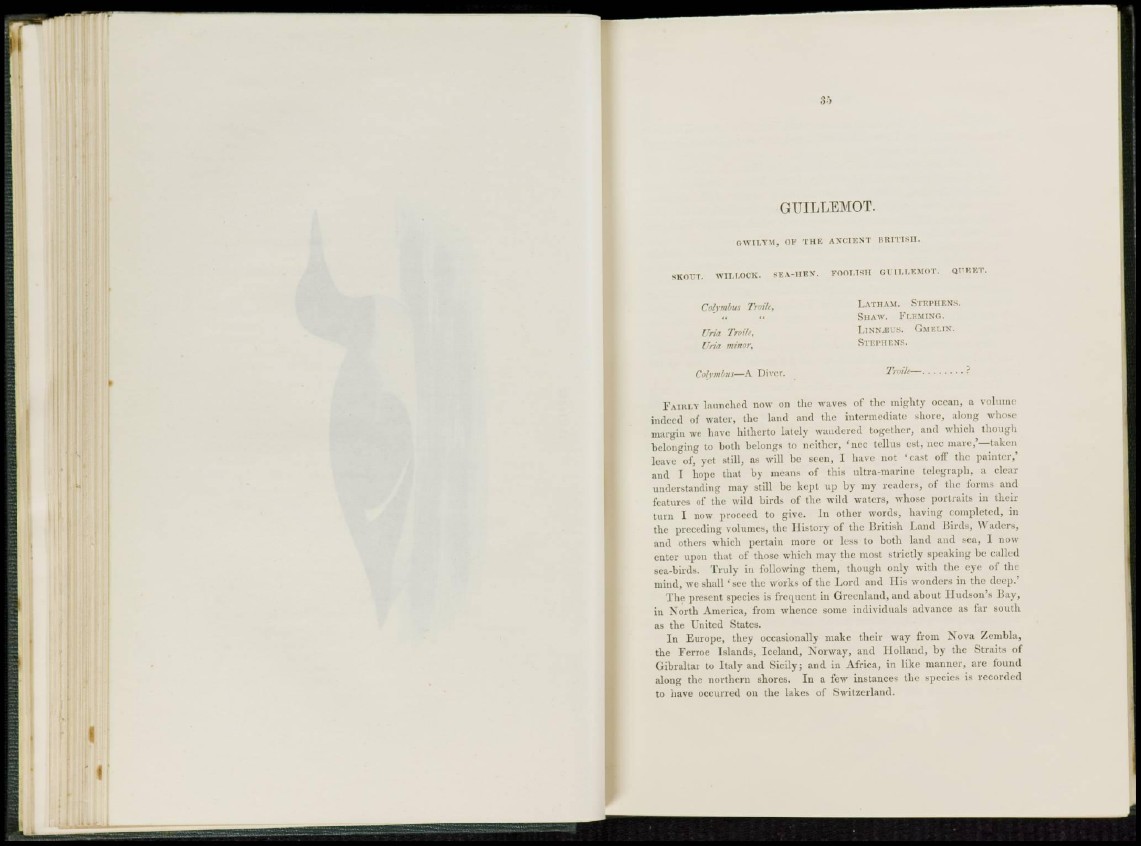
GUILLEMOT.
GWILYM, OF THE ANCIENT BRITISH.
SEOUT. WILLOOE. SEA-HEN. FOOLISH GUILLEMOT. QUE ET.
Colymbus Trotte,
Una Troile,
Una minor.
LATH \M. STEPHENS.
SHAW. FLEMING.
LINNETS. GHEUN.
S i EPHENS.
Colvmhus—A Diver. Troile— t
FAIRLY launched now on the waves of the mighty ocean, a volume
indeed of water, the land and the intermediate shore, along whose
margin we have hitherto lately wandered together, and which though
belonging to both belongs to n e i t h e r , Mice tellus est, nec m a r e / — t a k en
leave of, yet still, as will be seen, 1 h a r e not 'cast off the painter,'
a n d I hope that by means of this ultra-marine telegraph, a clear
understanding may still be kept up by my readers, of the forms and
features of the wild birds of the wild waters, whose portraits in their
t u r n 1 now proceed to give. In other words, having completed, in
the preceding volumes, the H i s t o r y of the British Land Birds, Waders,
and others which pertain more or less to both land and sea, 1 now
enter upon that of those which may the most strictly speaking be called
sea-birds. Truly in following them, though only with the eye of the
mind, we shall ' s e e the works of the L o r d and His wonders in the deep.'
The present species is frequent in G r e e n l a n d , and about H u d s o n ' s Bay,
in N o r t h America, from whence some individuals advance as far south
as t h e United States.
I n Europe, they occasionally make their way from Nova Zembla,
t h e Ferroe Islands, Iceland, Norway, and Holland, by the Straits of
Gibraltar to I t a l y and Sicily; and in Africa, in like manner, are found
along the northern shores. In a few instances- the species is recorded
to have occurred on the lakes of Switzerland.